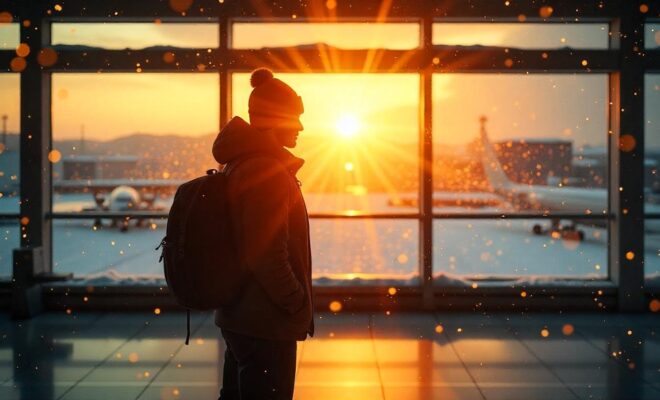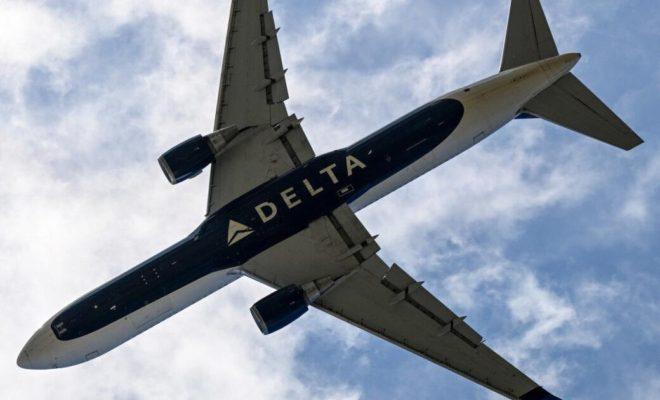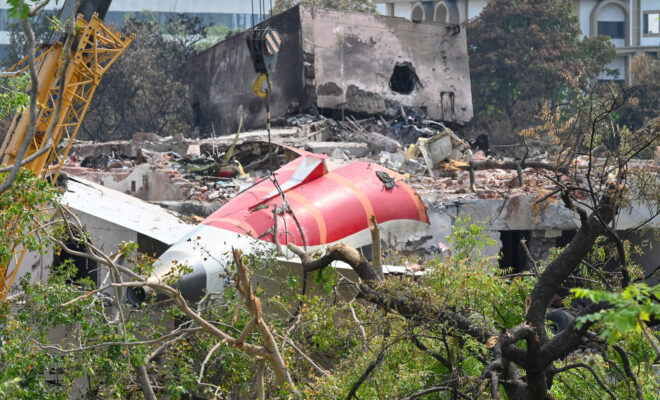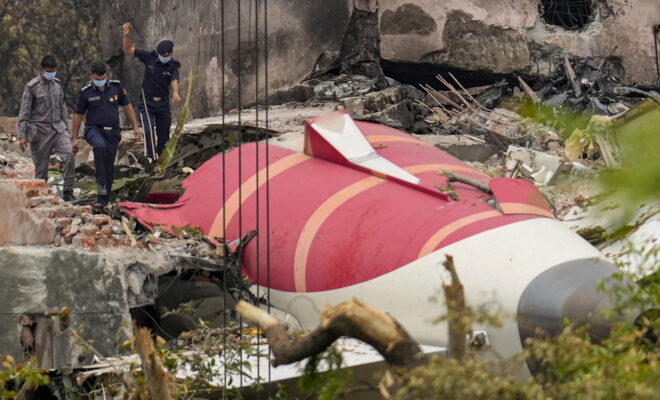Monday briefing: How the Air India crash happened and why it raises questions about aviation safety | Air India Ahmedabad plane crash
Good morning. An Air India plane bound for London Gatwick took off from Ahmedabad, India, at 1.38pm local time last Thursday. On board were 242 people. Within moments of takeoff, the airliner crashed, sending up a fireball of exploding jet fuel.
Initial reports suggested all passengers and crew had perished. Then, miraculously, there was one survivor – a British man, Vishwash Kumar Ramesh, who while badly injured was able to walk out of the wreckage by himself. Ramesh, who was returning to his family in London, told the Hindustan Times: “I don’t know how I survived. I saw people dying in front of my eyes – the air hostesses, and two people I saw near me … I walked out of the rubble.”
Air India said the passengers on board the Boeing 787 Dreamliner were made up of 169 Indian nationals, 53 British nationals, one Canadian and seven Portuguese nationals. Footage shows the plane flying low over a residential area before disappearing behind buildings followed by an explosion. At least 24 people on the ground died as the flight crashed into a hostel housing medical students in a crowded residential area of Ahmedabad.
A black box was recovered from the crash site last Friday. The UK Foreign Office said officials were working with Indian authorities to establish the facts around the crash and provide support to those involved.
The Indian prime minister, Narendra Modi, said he was stunned and saddened while the British prime minister, Keir Starmer, called the crash “devastating”.
There is still much we don’t know in the days since the crash, most importantly about why it happened. To help put things into context, I spoke to Gwyn Topham, the Guardian’s transport correspondent, about the Boeing airliner involved and why the crash is likely to renew scrutiny of the manufacturer. That’s after the headlines.
Five big stories
-
Middle East | Israel and Iran broadened their strikes against each other in an escalating war that has killed and injured hundreds of people. Donald Trump called for an end to the conflict and warned Tehran against striking US targets in the region.
-
UK news | The government’s welfare plans have to be pushed through, Keir Starmer has said, indicating that there will be no further concessions over cuts to disability benefits.
-
UK news | Thousands of university students in the UK have been caught misusing ChatGPT and other artificial intelligence tools in recent years, while traditional forms of plagiarism show a marked decline.
-
UK news | China and Russia are stepping up sabotage operations targeting undersea cables and the UK is unprepared to meet the mounting threat, according to new analysis.
-
Greenland | Emmanuel Macron has criticised Donald Trump’s threats to take over Greenland as he became the first foreign head of state to visit the vast, mineral-rich Arctic territory since the US president began making explicit threats to annex it.
In depth: Devastating news deeply felt in Britain
The plane crash is the deadliest involving Britons in recent years, casting a shadow of mourning over large parts of the UK.
Gareth Thomas, MP for Harrow West and the chair of the APPG on British Gujarati, told First Edition: “Harrow is home to a large British-Gujarati community, many of whom have close family ties to Gujarat, and this devastating news will be felt particularly strongly here.”
Among those confirmed dead are businessman Akeel Nanabawa, his wife, Hannaa Vorajee, and their four-year-old daughter Sara (pictured above), according to the Gloucester Muslim community.
Also killed in the crash were Fiongal and Jamie Greenlaw-Meek, who ran the Wellness Foundry in south London and Ramsgate. The business offered psychic readings, tarot, reiki, and yoga.
Adam Taju, 72, and his wife, Hasina, 70, were also on board, along with their son-in-law, Altafhusen Patel, 51, who lived in London with his wife.
Javed Ali Syed, a hotel manager at the Best Western Kensington Olympia Hotel, and his wife, Mariam, were also reportedly among the victims.
What do we know about the Boeing 787-8 Dreamliner?
The Air India plane that was headed to London was a Boeing 787 Dreamliner. This model of plane has been in service since 2011. There are more than 1,100 787s in service worldwide, used by most major international airlines. This is the first time one has crashed.
“It was seen as revolutionary when it came in because it was so much lighter,” Gwyn Topham explains. “People called it the ‘plastic plane’ at the time because of the composite materials. That made it more fuel-efficient, quieter, and generally a nicer plane to be on. It doesn’t feel that novel now, but at the time it was a leap forward.”
Gwyn adds: “There have been issues over the years. About a decade ago a lithium-ion battery caught fire on a plane parked at Heathrow, which was obviously alarming. And in 2013 there were a couple of electrical fires in Japan that led to the aircraft being grounded briefly. But nothing since that time that would make most people worry about flying this plane.”
He notes that while a whistleblower last year urged Boeing to ground all 787 Dreamliners worldwide during Washington hearings, Boeing rejected the claims.
Air India, which operates a fleet of Dreamliners, has been using the US-built long-haul plane since 2012. This is the airline’s first serious incident since 2020, when a smaller Boeing 737-800 operated by Air India Express skidded off the runway on landing during bad weather.
Tata Group, the parent company of Air India, said it would provide 10m rupees (£86,000) to the families of those killed in the crash. The company also said it would cover the medical costs of those injured and provide support in the “building up” of the medical college hit by the plane.
Further scrutiny on Boeing
This latest crash piles further pressure on Boeing, which has faced significant scrutiny over the past few years due to a series of production issues and safety concerns.
Most notable are the two major crashes that were due to faults on Boeing’s 737 Max planes, in Indonesia and Ethiopia in 2018 and 2019. That model was taken out of service for almost a year, before being relaunched and returned to widespread use.
Last month, Boeing agreed to pay $1.1bn (£812m) in a deal with the US justice department to avoid prosecution over these two crashes, which together killed 346 people. The families of the crash victims described the deal as “morally repugnant”.
“That really shocked the industry and the public. At first, many didn’t want to believe it could be the plane and people thought it might be pilot error. But it turned out to be Boeing’s fault, and that severely damaged trust,” Gwyn says.
“Since then, every Boeing incident, from relatively minor ones to the door panel that blew off on an Alaska Airlines flight last year, ends up getting massive attention. Ryanair has even complained publicly about receiving planes with faults.
“Even if this crash turns out to have nothing to do with the aircraft itself, it still puts a fresh spotlight on Boeing.”
What impact will this have on the aviation industry?
Hours after the crash, flights were allowed to resume at the airport in Ahmedabad. Despite these high profile crashes, Gwyn doesn’t expect passengers to be deterred from flying.
“It’s important to remember that aviation is very safe. I think 2023 had no fatal passenger jet crashes at all. When crashes do happen, they’re usually the result of a combination of rare and unexpected factors,” he says.
after newsletter promotion
As for the impact on passenger confidence, he adds: “Passenger numbers have kept rising year after year. Even when Ryanair offered refunds to passengers booked on the 737 Max, no one took them up on it. So while something like this may shake confidence in the short term, it doesn’t usually translate into people flying less.”
While public confidence in air travel is likely to endure, the aviation industry will once again be forced to engage in serious soul-searching over safety, accountability and public trust.
What else we’ve been reading
-
What do Fast & Furious, a vegetarian cookbook, and Link from Zelda (above) all have in common? The Guardian writers have named them, and more, as their unexpected Pride icons in this series. Sundus Abdi, newsletters team
-
After nearly 20 years of regular gym sessions, freelance journalist Joel Snape has called it quits. He writes a compelling case on why ditching the gym might actually make him fitter. Aamna
-
Few rappers have been more feted than Slick Rick – Jay Z even compared him to Matisse – or worn more outrageous jewellery. Alexis Petridis gets a taste of both lyrics and bling in this delightful encounter. Alex Needham, acting head of newsletters
-
While politicians may be targeting the burqa with proposed bans, fashion inspired by Islam and other religions is projected to go mainstream worldwide. Aamna
-
At 53, playwright Femi Elufowoju Jr made a promise to visit all 54 nations in Africa to expand his limited knowledge of the continent. He shares how these travels sparked an idea for an “ambitious” play. Sundus
Sport
Formula One | The British driver George Russell won the Canadian Grand Prix for Mercedes, beating the four-time world champion Max Verstappen. McLaren’s Lando Norris and Oscar Piastri had a collision.
Tennis| Tatjana Maria, 37, became both the oldest World Tennis Association 500 champion in history and the first women’s champion at Queen’s Club in 52 years when she beat Amanda Anisimova.
US Open | American JJ Spaun, pictured above, finished two shots clear of Bob MacIntyre – claiming the first major title of his career with a monster final putt on a wet and wild day at Oakmont.
The front pages
“Israel and Iran broaden war as G7 leaders seek ceasefire” says the Guardian. “Israel and Iran step up retaliatory strikes” says the Financial Times across a single deck right along the top. “World crisis” says the Mirror under a strapline saying “Israel & Iran on the brink”. The Times helps the US president make himself look relevant – “Trump says ‘full might’ of US ready for conflict” – as does the Telegraph with “Trump vetoed plan to kill Iran leader”. The i paper has “RAF on standby to defend Israel as conflict with Iran escalates”. “You’ll pay a heavy price” – that’s Netanyahu’s warning to Iran, says the Metro, after Tehran retaliated. The Mail splashes on “Starmer in full retreat over grooming gangs” and the Express’s version is “Say sorry for dealy in sex gangs probe”.
Today in Focus
Arise, Sir David Beckham – podcast
Zoe Williams goes through the highs and lows of David Beckham’s career, and asks why it took so long for him to receive a knighthood.
Cartoon of the day | Edith Pritchett
The Upside
A bit of good news to remind you that the world’s not all bad
Freddie Yauner spends the first few months of the year growing out his hair and beard to resemble 19th-century designer and activist William Morris. The idea first came to him in 2020 and ever since then, Yauner has celebrated his idol’s birthday by dressing up for an “absurd performance”. This unique passion has taken all forms: fishing for salmon in the Thames, singing lessons for socialist chants and print-making using Morris’ letterpress.
Yauner says using his privileged background to dedicate himself to the arts and socialism, like Morris, has afforded him a sense of comfort and guidance: “I see him as a brilliant guide to the ridiculous times we live in: it’s a ridiculous thing to do. It helps me carry on.”
Sign up here for a weekly roundup of The Upside, sent to you every Sunday
Bored at work?
And finally, the Guardian’s puzzles are here to keep you entertained throughout the day. Until tomorrow.










